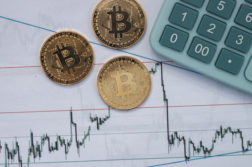Do people use cryptocurrency to pay for small daily purchases, such as a burger and fries, or a subway fare? The preferred means of payment likely hinges on cost and convenience. For small everyday local purchases, cash, cards, and smartphone payment apps are likely to be cheapest and easiest to use. Cryptocurrencies are only competitive when transactions are large and span national borders. For such transactions, cryptocurrencies compete directly with banks and non-bank financial institutions such as PayPal and informal remittance mechanisms such as hawala.
Consider, for example, the fees needed to get the blockchain to process a single bitcoin transaction. The time needed to process a transaction is inversely related to the transaction fee offered to miners. On average, a new block is processed every 15 minutes. The graph below shows that the cost of including a transaction in the next one, three, or six blocks on the blockchain has varied widely over time from a low of a few cents to as much as $37. The potential high transaction cost and variability make bitcoin an unappealing way to pay for a burger and fries.
Cryptocurrency becomes a competitive payment mechanism when transaction sizes are large and transactions span national borders. In this market, cryptocurrencies not only compete with banks but also with money transfer and remittance agents.
PayPal is a regulated electronic funds transfer agent. For a small commission, PayPal will transfer national currencies between any two parties, provided the parties have access to email and a PayPal account. PayPal transactions do not require a bank account. However, PayPal transactions are not anonymous, and single transactions must be less than $10,000.
Read more at:
Cash, credit, or bitcoin: Do cryptocurrencies make good ‘spending money’?








